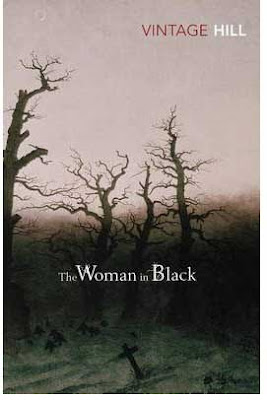
I never knew that it would be challenging to review a 170-page book. But Adolfo Bioy Casares's short but pithy novel,
Asleep in the Sun, totally defied all my expectations after reading it straight one lazy Sunday afternoon. It's a love story, science fiction, a commentary of Argentine social structures, an exploration of our attachment with routine, and, finally, a fable.
Lucio Bordenave, the main character, loves his wife, Diana, with a passion bordering on madness. Never mind that she's constantly quarreling with him and embarrassing him in front of his family because of his being unemployed. When Lucio becomes a repairman of clocks, Diana's disdain for her husband only increases, telling him that she has no appreciation for these devices, except for the cuckoo clock which she adores.
...Diana dropped into an armchair, cuddled up, hugging one leg, leaned her face against her knee, and stared into space. Seeing her that way I said to myself, I swear, I couldn't live without her. Also stimulated by enthusiasm, I conceived truly extraordinary thoughts and fell to asking myself, What is Diana to me? Her soul? Her body? I love her eyes, her face, her hands, the smell of her hands and her hair. [page 19]
Of course,
Asleep in the Sun is not an out and out love story, since this novel was written by Casares, who was good friends with Jorge Luis Borges. Naturally, things progress to a surreal narrative. Upon the recommendation of Professor Standle, a German who absolutely loves dogs, Lucio agrees to have Diana committed to a mental institution. And this is where things get a bit funny, creepy, and, well, sci-fi-ey.
First, as soon as Diana is sent to the mental institution against her will, her sister, Adriana Maria, flirts excessively with Lucio. But Lucio would not have anything to do with her. He's Diana's through and through. He misses his wife so much that he decides to get her a dog from Standle, who sells him a German shepherd. Oddly, the dog's name is also Diana. So it makes you wonder why Lucio would have Diana sent to a mental institution for her to have a more positive outlook in life or, more specifically, for her to eliminate her hostility to Lucio. But I'll get to that part in a bit.
Second, it seems that the mental institution isn't allowing anyone to visit their patients. Lucio becomes paranoid as to what really goes on in the hospital. He frequently makes secret trips to the hospital and hides in the corner, hoping that he would get a glimpse of his wife from one of the institution's windows. Sadly, this never happens. And then one day, he receives a call that Diana can now be discharge because she is now "cured."
Third, the newly discharged Diana has now become a doting wife who loves Lucio so much. Lucio's relative, Ceferina, confronts Lucio that his wife is not the same person anymore. In denial, Lucio dismisses her comments but comes to a horrific realization when he himself gets committed to the same mental institution where his wife has been. Casares's depiction of Lucio's paranoia is masterful. From a novel that starts out with comedic episodes, Asleep in the Sun has now ventured into Borges-like territory.
I don't understand a thing. Sometimes it seems that I'm never going to leave here; other times, that I'm going to leave at any moment. If I think that I'm not going to leave, I write feverishly so that you will get me out. If I think that I'm about to leave, I continue writing out of habit. I relive so many memories as the pen rushes along; some are distressing, I don't deny it, but many are pleasant. [page 137]
One of the questions
Asleep in the Sun asks is, "Why do we crave for routine?" Lucio should have been happy with the new Diana, but apparently, the absence of Diana's hostility toward him has left a vacuum. "Is it love?" one may pose. Perhaps. We can see that Lucio's love for Diana, while being one directional, is unconditional. He comes to a realization that he doesn't need to have Diana changed. He loves her for all she is -- her indifference, her beauty, her soul.
Interestingly, Casares also explores the concept of the soul in
Asleep in the Sun, although he ties it up in a very pseudo-scientific approach at the novel's end. We discover that the doctors of the mental institution are experimenting with transferring the essence of the soul into another body, allowing them to put a new soul with more positive qualities into the original body. This explains why the new Diana is so Stepford-y. And what of the soul of Diana, well, the doctors have transferred it into the body of a dog, which became restless and managed to escape the institution.
Asleep in the Sun is one novel that will make you think. It's amazing how Casares was able to integrate all these disparate themes into one short, tightly written novel. It has definitely inspired me to look up the other novels written by this Argentine writer.
Read this book if:
- You like to read books with a surreal narrative.
- You feel that dogs are better company than humans.
- You'll read anything published by NYRB.
Sidebar:
And speaking of NYRB, thanks to
Honey and
Mrs. B for sponsoring the NYRB week beginning November 07. I love the NYRB editions. I have never been disappointed with these books. The true bibiliophile will find it difficult to resist buying NYRB titles if they see them in bookstores.




































